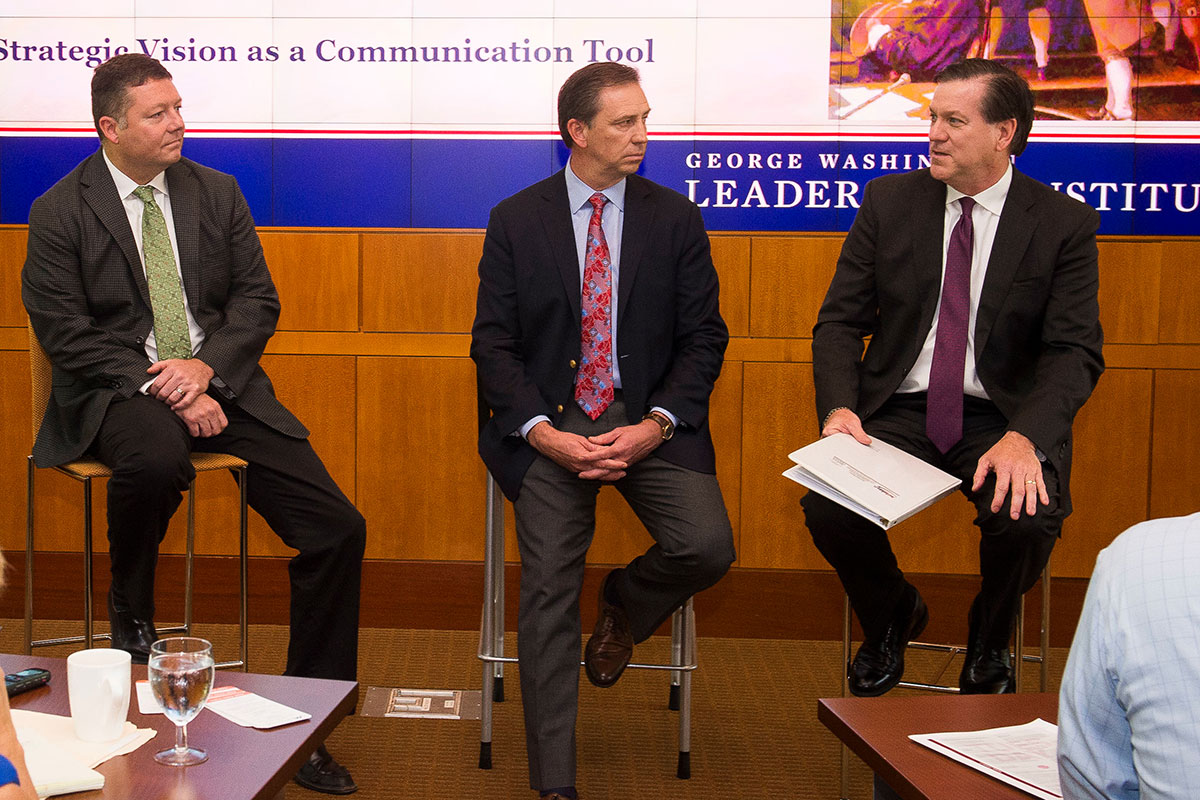MOUNT VERNON, VA. — At the American Bakers Association’s NextGen Baker Leadership Forum, held Oct. 1-2 at the George Washington Leadership Institute at Mount Vernon, Va., and in conjunction with the A.B.A. and A.T.B.I. board of directors meetings, Brad Alexander, president, fresh packaged bread, Flowers Foods; Tim Cook, president and chief executive officer, Shick Esteve; and Bill Quigg, president, Richmond Baking Co., (which has a sister company, More Than A Bakery), shared their thoughts and best practices on leadership.
In part three of Baking & Snack’s Lessons in Leadership series, the three executives outline how they communicate with their employees. The discussion was based on the leadership principles of the nation’s founding father, President George Washington. Leading the panel was Peter Cressy, Ph.D., retired U.S. Navy Rear Admiral and director of executive leadership management and strategy programs at the George Washington Leadership Institute.
Peter Cressy: Vision, credibility, culture are all key components of communication. What would you consider are the most successful elements of your personal communication strategy with your team? Frequency? Transparency? Access?
Bill Quigg: One of our values is presence. That’s not just being physically present but also mentally and emotionally so. In other words, when we’re having a conversation, I’m not looking over your shoulder. When we built our bakery, one thing we did was design big, open spaces. We call them Family Spaces. We have ‘family’ tables to sit and eat lunch. I don’t have an office anymore. I just grab my laptop and briefcase and just sit at a table. It’s not ‘open door.’ There’s no door. It just works for me. I love the interaction; easily 80% of my job is talking to people. That’s what I’m there for.

We’re a transparent organization as well, but there are times when you just can’t share things. So, frequency, to me, is the most important.
Every quarter, I hold a meeting with our management team and a meeting with the whole company. We review the financials and where we are on strategic initiatives. And we open the floor for questions. I found two things: You have to address issues, even if the way you address them is by saying, ‘I can’t talk about that right now,’ or ‘Nothing changes until it changes, and I’ll tell you as soon as something changes.’
I think the other thing that’s important about organizational communication is remembering the cycle of acceptance. As c.e.o. of the company, when there’s change coming, no matter what it is, if it’s significant, before anybody knows about it, I’ve gone through an acceptance cycle. I’ve moved on. I have to remember a few months later when I communicate to the organization that they’re hearing it for the first time and I need to be cognizant of that when I deliver the news.
We talk a lot about how we communicate and what we’re communicating. And then the last thing, on the transparency side, I view it as my role to talk to the company when things are going well, and we celebrate together. But it’s also my role to stand up there when we’re not doing well; it’s just as important at those times to address the organization on why that is and what we need to do differently.
What about making yourselves accessible?
Brad Alexander: I believe it’s important to be accessible to your team. It’s easy to stay in your office and communicate by phone and email, but it’s not as effective. I manage by being visible — walking around the office, attending meetings in person, visiting the office of a direct report. I think there’s value in meeting with team members on neutral ground — or even their turf. You may have a more open dialogue with them if you’re not sitting behind your desk.
In our business unit, we do a lot of training and collaboration between senior category staff, brand managers, and others. We get everyone involved. I also go into the market with my direct reports. We all see things differently — whether it’s product quality, a competitive item, or something interesting in a different category. It’s about spending time and being approachable.
Click here to read part one of the “Lessons in leadership” series and click here to read part two.




